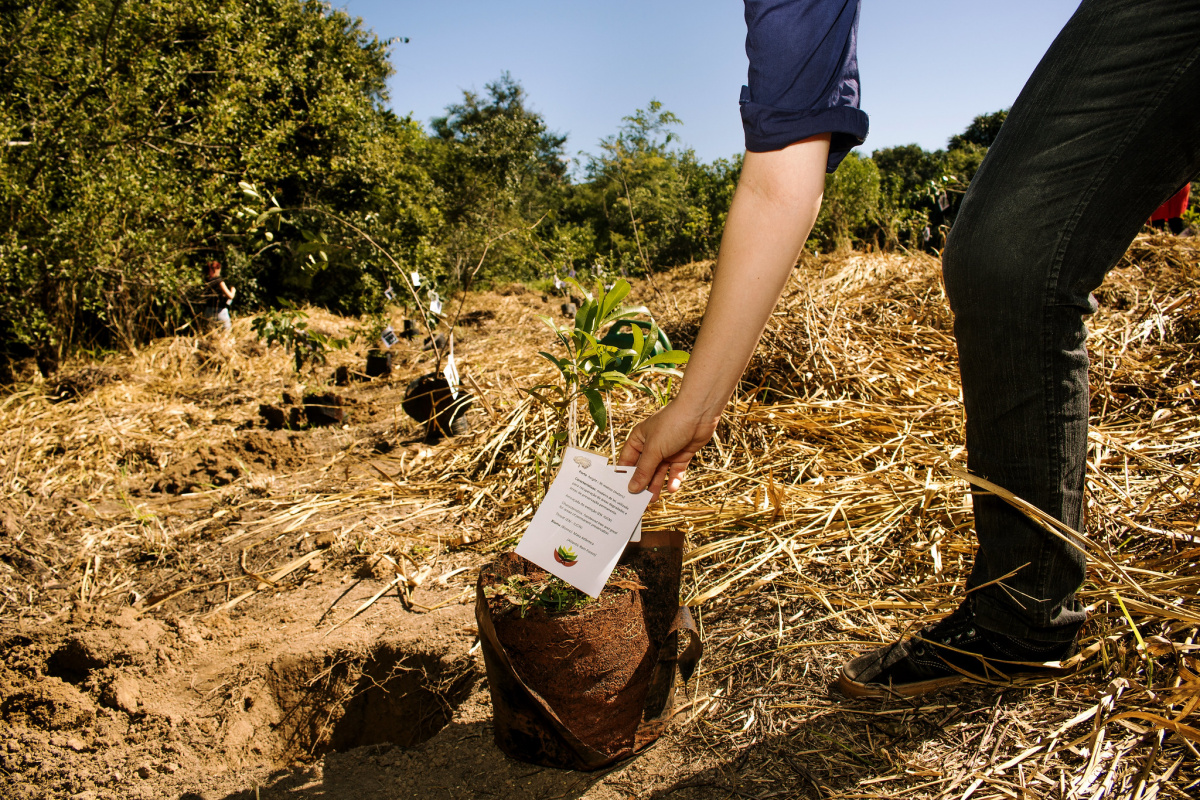Your questions about biofuels
Dr Randall Reeves, Marine mammals are fascinating and charismatic animals but many of them are seriously threatened, mostly due to commercial activities.

Photo: Riddering
![]() What is the difference between first and second-generation biofuels and how are biofuels different from bioenergy? Kazi Zaved Khalid Pasha - AGIR Association Gestion integree des Ressources
What is the difference between first and second-generation biofuels and how are biofuels different from bioenergy? Kazi Zaved Khalid Pasha - AGIR Association Gestion integree des Ressources
![]() “First-generation” biofuels employ relatively simple and well-established technologies and use edible food crops as feedstocks. “Second-generation” biofuels use more advanced technologies to capture and convert the energy contained in cellulose from a wide range of feedstocks including poplar trees, grasses such as switchgrass and miscanthus as well as waste. They can reduce the land footprint of biofuel production and improve the GHG and energy balances of biofuels. The technology is considered to be 5–10 years from commercial viability.
“First-generation” biofuels employ relatively simple and well-established technologies and use edible food crops as feedstocks. “Second-generation” biofuels use more advanced technologies to capture and convert the energy contained in cellulose from a wide range of feedstocks including poplar trees, grasses such as switchgrass and miscanthus as well as waste. They can reduce the land footprint of biofuel production and improve the GHG and energy balances of biofuels. The technology is considered to be 5–10 years from commercial viability.
Biofuels are a sub-category of bioenergy, which refers to any energy sourced from non-fossil biomass used for heat, electrical power, or transport. Bioenergy currently accounts for roughly 10% of total primary energy supply globally but most of this energy is consumed as wood for cooking in developing countries. Biofuels make up only a small fraction of current bioenergy use.
![]() Studies show that the amount of funding currently being invested in conservation is far below what's needed, but if significant new funding does materialize, how should it be spent to best effect? Read the views of leading environmentalists and join the debate? Zaved Khalid Pasha - AGIR Association Gestion integree des Ressources
Studies show that the amount of funding currently being invested in conservation is far below what's needed, but if significant new funding does materialize, how should it be spent to best effect? Read the views of leading environmentalists and join the debate? Zaved Khalid Pasha - AGIR Association Gestion integree des Ressources
![]() “First-generation” biofuels employ relatively simple and well-established technologies and use edible food crops as feedstocks. “Second-generation” biofuels use more advanced technologies to capture and convert the energy contained in cellulose from a wide range of feedstocks including poplar trees, grasses such as switchgrass and miscanthus as well as waste. They can reduce the land footprint of biofuel production and improve the GHG and energy balances of biofuels. The technology is considered to be 5–10 years from commercial viability.
“First-generation” biofuels employ relatively simple and well-established technologies and use edible food crops as feedstocks. “Second-generation” biofuels use more advanced technologies to capture and convert the energy contained in cellulose from a wide range of feedstocks including poplar trees, grasses such as switchgrass and miscanthus as well as waste. They can reduce the land footprint of biofuel production and improve the GHG and energy balances of biofuels. The technology is considered to be 5–10 years from commercial viability.
![]() What is the difference between first and second-generation biofuels and how are biofuels different from bioenergy? Kazi Zaved Khalid Pasha - AGIR Association Gestion integree des Ressources
What is the difference between first and second-generation biofuels and how are biofuels different from bioenergy? Kazi Zaved Khalid Pasha - AGIR Association Gestion integree des Ressources
![]() “First-generation” biofuels employ relatively simple and well-established technologies and use edible food crops as feedstocks. “Second-generation” biofuels use more advanced technologies to capture and convert the energy contained in cellulose from a wide range of feedstocks including poplar trees, grasses such as switchgrass and miscanthus as well as waste. They can reduce the land footprint of biofuel production and improve the GHG and energy balances of biofuels. The technology is considered to be 5–10 years from commercial viability.
“First-generation” biofuels employ relatively simple and well-established technologies and use edible food crops as feedstocks. “Second-generation” biofuels use more advanced technologies to capture and convert the energy contained in cellulose from a wide range of feedstocks including poplar trees, grasses such as switchgrass and miscanthus as well as waste. They can reduce the land footprint of biofuel production and improve the GHG and energy balances of biofuels. The technology is considered to be 5–10 years from commercial viability.
Biofuels are a sub-category of bioenergy, which refers to any energy sourced from non-fossil biomass used for heat, electrical power, or transport. Bioenergy currently accounts for roughly 10% of total primary energy supply globally but most of this energy is consumed as wood for cooking in developing countries. Biofuels make up only a small fraction of current bioenergy use.
![]() Studies show that the amount of funding currently being invested in conservation is far below what's needed, but if significant new funding does materialize, how should it be spent to best effect? Read the views of leading environmentalists and join the debate? Zaved Khalid Pasha - AGIR Association Gestion integree des Ressources
Studies show that the amount of funding currently being invested in conservation is far below what's needed, but if significant new funding does materialize, how should it be spent to best effect? Read the views of leading environmentalists and join the debate? Zaved Khalid Pasha - AGIR Association Gestion integree des Ressources
![]() “First-generation” biofuels employ relatively simple and well-established technologies and use edible food crops as feedstocks. “Second-generation” biofuels use more advanced technologies to capture and convert the energy contained in cellulose from a wide range of feedstocks including poplar trees, grasses such as switchgrass and miscanthus as well as waste. They can reduce the land footprint of biofuel production and improve the GHG and energy balances of biofuels. The technology is considered to be 5–10 years from commercial viability.
“First-generation” biofuels employ relatively simple and well-established technologies and use edible food crops as feedstocks. “Second-generation” biofuels use more advanced technologies to capture and convert the energy contained in cellulose from a wide range of feedstocks including poplar trees, grasses such as switchgrass and miscanthus as well as waste. They can reduce the land footprint of biofuel production and improve the GHG and energy balances of biofuels. The technology is considered to be 5–10 years from commercial viability.
![]() What is the difference between first and second-generation biofuels and how are biofuels different from bioenergy? Zaved Khalid Pasha - AGIR Association Gestion integree des Ressources
What is the difference between first and second-generation biofuels and how are biofuels different from bioenergy? Zaved Khalid Pasha - AGIR Association Gestion integree des Ressources
![]() “First-generation” biofuels employ relatively simple and well-established technologies and use edible food crops as feedstocks. “Second-generation” biofuels use more advanced technologies to capture and convert the energy contained in cellulose from a wide range of feedstocks including poplar trees, grasses such as switchgrass and miscanthus as well as waste. They can reduce the land footprint of biofuel production and improve the GHG and energy balances of biofuels. The technology is considered to be 5–10 years from commercial viability.
“First-generation” biofuels employ relatively simple and well-established technologies and use edible food crops as feedstocks. “Second-generation” biofuels use more advanced technologies to capture and convert the energy contained in cellulose from a wide range of feedstocks including poplar trees, grasses such as switchgrass and miscanthus as well as waste. They can reduce the land footprint of biofuel production and improve the GHG and energy balances of biofuels. The technology is considered to be 5–10 years from commercial viability.
Biofuels are a sub-category of bioenergy, which refers to any energy sourced from non-fossil biomass used for heat, electrical power, or transport. Bioenergy currently accounts for roughly 10% of total primary energy supply globally but most of this energy is consumed as wood for cooking in developing countries. Biofuels make up only a small fraction of current bioenergy use.
![]() Studies show that the amount of funding currently being invested in conservation is far below what's needed, but if significant new funding does materialize, how should it be spent to best effect? Read the views of leading environmentalists and join the debate? Zaved Khalid Pasha - AGIR Association Gestion integree des Ressources
Studies show that the amount of funding currently being invested in conservation is far below what's needed, but if significant new funding does materialize, how should it be spent to best effect? Read the views of leading environmentalists and join the debate? Zaved Khalid Pasha - AGIR Association Gestion integree des Ressources
![]() “First-generation” biofuels employ relatively simple and well-established technologies and use edible food crops as feedstocks. “Second-generation” biofuels use more advanced technologies to capture and convert the energy contained in cellulose from a wide range of feedstocks including poplar trees, grasses such as switchgrass and miscanthus as well as waste. They can reduce the land footprint of biofuel production and improve the GHG and energy balances of biofuels. The technology is considered to be 5–10 years from commercial viability.
“First-generation” biofuels employ relatively simple and well-established technologies and use edible food crops as feedstocks. “Second-generation” biofuels use more advanced technologies to capture and convert the energy contained in cellulose from a wide range of feedstocks including poplar trees, grasses such as switchgrass and miscanthus as well as waste. They can reduce the land footprint of biofuel production and improve the GHG and energy balances of biofuels. The technology is considered to be 5–10 years from commercial viability.



